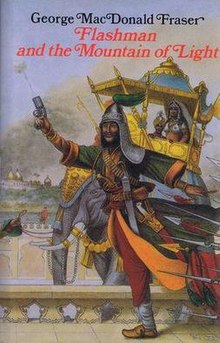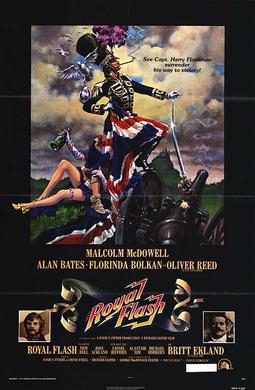
Royal Flash is a 1975 British adventure comedy film based on the second Flashman novel by George MacDonald Fraser. It stars Malcolm McDowell as Flashman. Additionally, Oliver Reed appeared in the role of Otto von Bismarck, Alan Bates as Rudi von Sternberg, and Florinda Bolkan played Lola Montez. Fraser wrote the screenplay and the film was directed by Richard Lester.

The Battle of Sobraon was fought on 10 February 1846, between the forces of the East India Company and the Sikh Khalsa Army, the army of the declining Sikh Empire of the Punjab. The Sikhs were completely defeated, making this the decisive battle of the First Anglo-Sikh War.
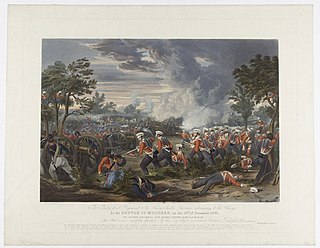
The Battle of Mudki was fought on 18 December 1845, between the forces of the East India Company and part of the Sikh Khalsa Army, the army of then declining Sikh Empire of the Punjab. The British army won an untidy encounter battle, sustaining heavy casualties.
Tom Brown is a fictional character created by author Thomas Hughes in his work Tom Brown's School Days (1857) which is set at a real English public school—Rugby School for Boys—in the 1830s when Hughes himself had been a pupil there. Tom Brown is based on the author's brother, George Hughes, and George Arthur is based on Arthur Penrhyn Stanley.

Flashman is a 1969 novel by George MacDonald Fraser. It is the first of the Flashman novels.

Royal Flash is a 1970 novel by George MacDonald Fraser. It is the second of the Flashman novels. It was made into the film Royal Flash in 1975 and remains the only Flashman novel to be filmed.
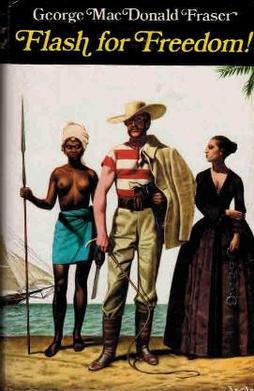
Flash for Freedom! is a 1971 novel by George MacDonald Fraser. It is the third of the Flashman novels.

Flashman at the Charge is a 1973 novel by George MacDonald Fraser. It is the fourth of the Flashman novels. Playboy magazine serialised Flashman at the Charge in 1973 in their April, May and June issues. The serialisation is unabridged, including most of the notes and appendixes, and features a few illustrations, collages from various paintings and pictures to depict a period montage of the Charge and Crimea.
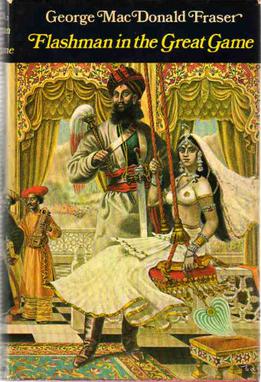
Flashman in the Great Game is a 1975 novel by George MacDonald Fraser. It is the fifth of the Flashman novels.
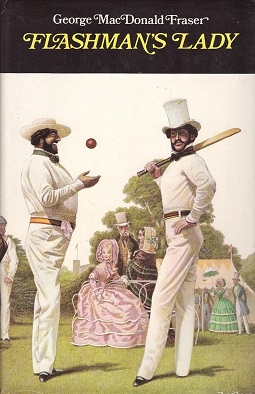
Flashman's Lady is a 1977 novel by George MacDonald Fraser. It is the sixth of the Flashman novels.

Flashman and the Redskins is a 1982 novel by George MacDonald Fraser. It is the seventh of the Flashman novels.

Flashman and the Dragon is a 1985 novel by George MacDonald Fraser. It is the eighth of the Flashman novels.
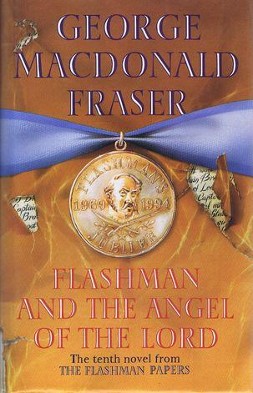
Flashman and the Angel of the Lord is a 1994 novel by George MacDonald Fraser. It is the tenth of the Flashman novels.

Flashman and the Tiger is a 1999 book by George MacDonald Fraser. It is the eleventh of the Flashman books.

Flashman on the March is a 2005 novel by George MacDonald Fraser. It is the twelfth and last Flashman novel.
Harry "Scud" East is a fictional character in the book Tom Brown's School Days. He is perhaps the closest friend of Tom Brown. His nickname is Scud because he is so quick on his feet. In the book he is referred to as East.
Quartered Safe Out Here: A Recollection of the War in Burma is a military memoir of World War II by George MacDonald Fraser, the author of The Flashman Papers series of novels. Quartered Safe Out Here was first published in 1993.

Black Ajax is a historical novel by George MacDonald Fraser based on the career of Tom Molineaux. It is set during the Regency era. The father of Harry Flashman appears as a major character although the book is not part of the official Flashman series.
The Flashman Papers is a series of novels and short stories written by George MacDonald Fraser, the first of which was published in 1969. The books centre on the exploits of the fictional protagonist Harry Flashman. He is a cowardly British soldier, rake and cad who is placed in a series of real historical incidents between 1839 and 1894. While the incidents and much of the detail in the novels have a factual background, Flashman's actions in the stories are either fictional, or Fraser uses the actions of unidentified individuals and assigns them to Flashman. Flashman is a character in the 1857 novel by Thomas Hughes, Tom Brown's School Days; Hughes' version of the character is a bully at Rugby School who is expelled for drunkenness. The character was then developed by Fraser, and appeared in the 1969 novel Flashman. Fraser went on to write a total of eleven novels and one collection of short stories featuring the character.
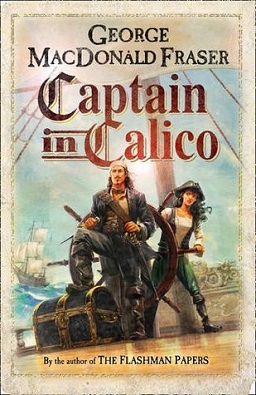
Captain in Calico is a 2015 novel by George MacDonald Fraser. It was published seven years after his death in 2008 and is about the pirate Jack Rackham. Mary Read and Anne Bonny also appear as characters in this novel.
